Bruny Island launch: James Bunker on the Bruny Island Environment Network
Bruny Island
Introduction by Dr Phill Pullinger, Kuno Director and CEO:
James’ childhood included time living in the highlands of Papua New Guinea. He has spent much of his life committed to the causes of social justice and the protection of Nature and a better future for our planet.
Since he found his home here on Bruny, James has made an extraordinary commitment to the life of this island - including his leadership at the Men’s Shed, where you can see him hard at work in this photo painting and cutting up nest boxes for forty-spotted pardalotes, to his leadership of the Bruny Island Environment Network.
One of things we’re really keen this project does, is not just celebrate a love of Nature but drive people towards action to protect Nature. James is going to talk about some of what the Bruny Island Environment Network and the community in that regard. Thanks James.
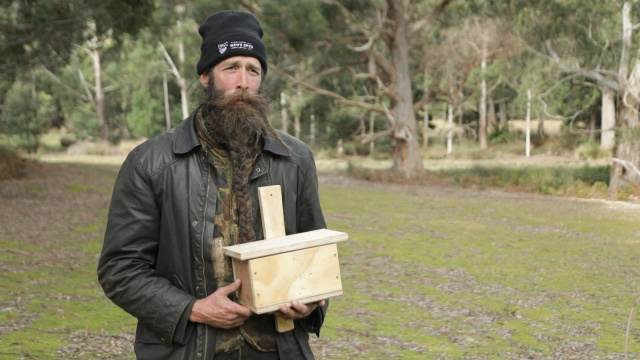
James Bunker: I came to Bruny Island about six years ago. It was the first place I came to in Tasmania and I immediately fell in love with the place. I have a background in ecology and environment conservation. I joined the BIEN team shortly after my arrival on Bruny Island and have recently taken over the role of convenor from Bob Graham, who has – along with Marg and others on the team – kept BIEN going for about 15 years, which is absolutely amazing.
I’m here to talk about BIEN. I’ll talk a little bit about its history and the work we do. BIEN is a community-based volunteer organisation run by a community with a love and respect for Nature and the environment. BIEN is a whole-island organisation, with representatives from both North and South Bruny. We work with and foster relations between other Bruny-based organisations. We also work with off-island organisations such as BirdLife Tasmania, the National Parks and Wildlife Service, NRE South, Kingborough Council and state and Federal governments.
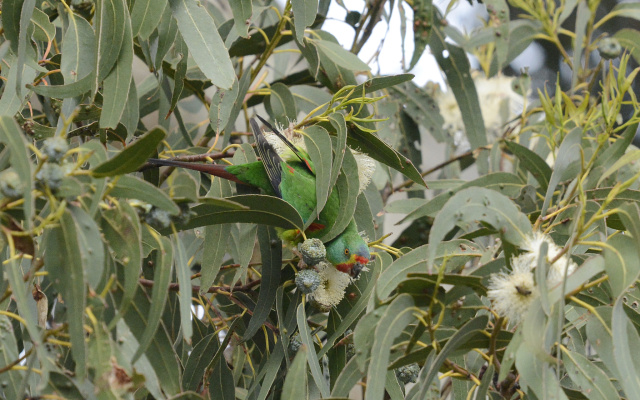
We’ve been involved with national bird counts with BirdLife Tasmania for years, which is a huge dataset. It’s very important.
We’re involved with the threatened woodland birds project on Bruny Island and forty-spotted pardalote and swift parrot hatching plans. We work with NRM South about the cats, deer and soon to be rabbits. We’re doing work on roadkill speed limits and Nothofagus research.
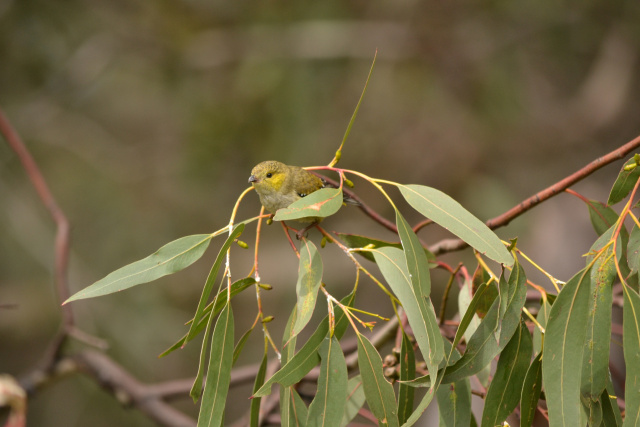
For the threatened woodland birds project, BIEN and Inala have joined together with Dr Andrew Hingston and many others.
In the last two years there has been 2033 trees planted – 1413 for swift parrots and 620 for forty-spotted pardalote.
Since 2009 the Bruny Island Men’s Shed has partnered with BIEN and designed and manufactured nesting boxes. The importance of nesting boxes was recently highlighted by Dr Sally Bryant, who gave a talk at the Men’s Shed about the fact that nesting boxes are one of the number one tools against extinction for the forty-spot. So that’s pretty good.
We make face plates with different sized holes, because the experiment is adapting to what the animals are adapting to, and climate change etc.
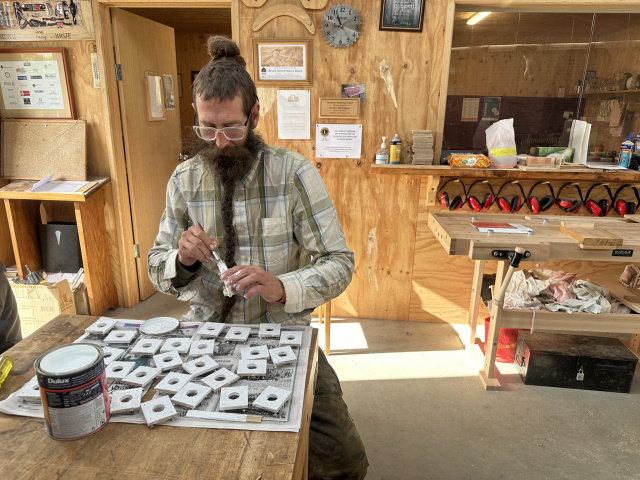
We’re looking at multiple tiny hole sizes - they’re one of the smallest birds in Australia – so they can let the birds in and out and not let any other animals in. For the forty-spots, this has resulted in a 95% survival rate.
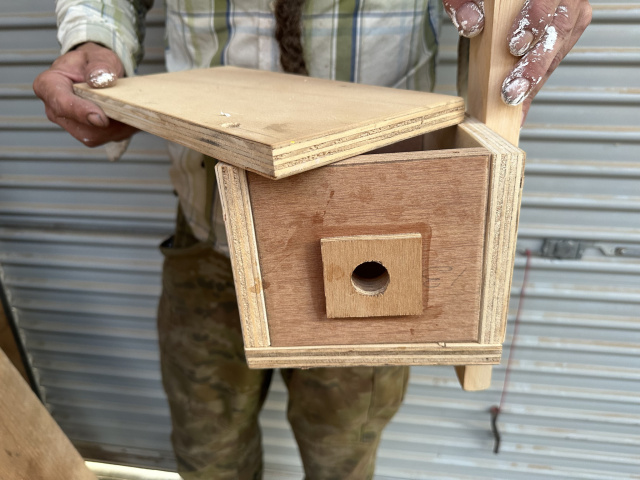
We’re also trialing other flowering trees to fill the gap between planting the tree and it flowering. And we continue to source funding from philanthropic sources, government grants and fundraising and world-famous Bruny Island Bird Festival.
We work with NRM South – on cats and rabbits. For the last three years BIEN have been working with NRM South on feral cat tracking. Just recently Federal Environment Minister Tanya Plibersek has said that they’ve given $3.5 million to a program called Biodiversity Bruny, to not only manage the feral cat issue but to enhance biodiversity on Bruny Island.
Cat control is important. Just some of the species affected by feral cats are the little penguin, the shearwater or mutton bird and the eastern quoll.
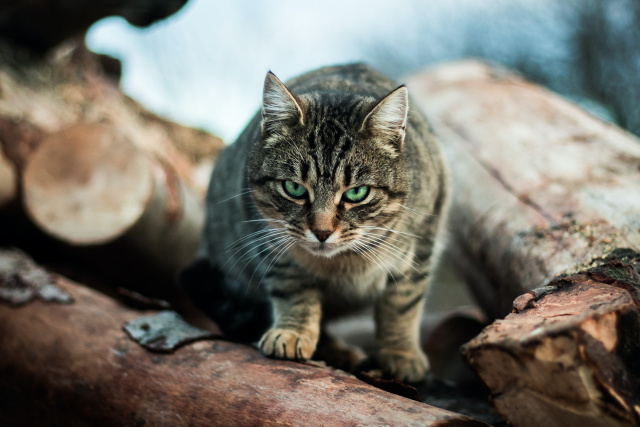
The other part of the Biodiversity Bruny project we’re looking at is the location and distribution of rabbits, which are a major ecological threat because of land degradation and because they are supplementary food source material for cats.
We’re working with the Department of Climate Change, Energy, Environment and Water.
Bruny Island has been recognised as one of 20 priority areas nationally. - which is pretty amazing when you think about how big Australia is and how many diverse and crazy beautiful places there are.
It has been recognised because Bruny Island has sub-alpine plant forest, tall wet sclerophyll forest, dry sclerophyll woodland and coastal vegetation. There are at least two threatened ecological communities recognised – black gum and white gum.
Threatened animal and plant species include the eastern quoll, forty-spotted pardalote, shy eyebright, chestnut leaf orchid and sky-blue sun orchid. Threats recognised in that program are habitat loss and degradation and tourism. Moderate threats include altered fire ratings, climate change, such as drought and extreme temperatures.
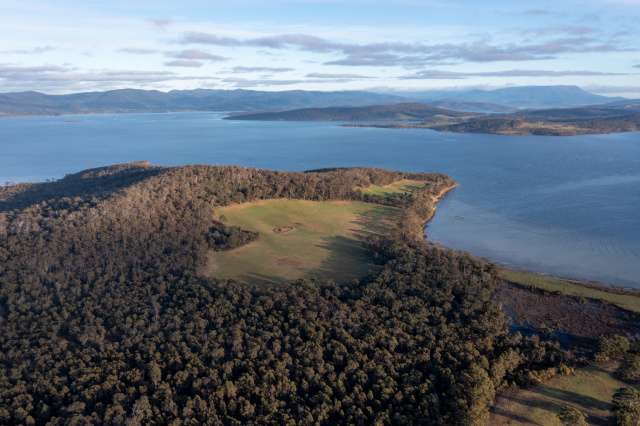
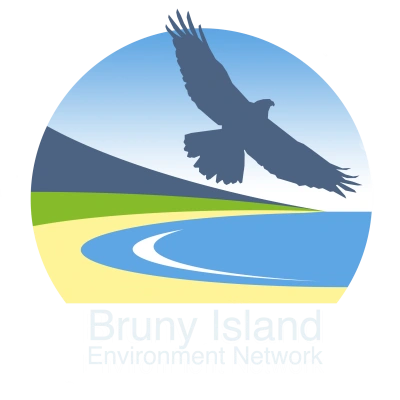
Bruny Island Environment Network

James Bunker
independent researcher, BIEN
Introduction by Dr Phill Pullinger, Kuno Director and CEO:
James’ childhood included time living in the highlands of Papua New Guinea. He has spent much of his life committed to the causes of social justice and the protection of Nature and a better future for our planet.
Since he found his home here on Bruny, James has made an extraordinary commitment to the life of this island - including his leadership at the Men’s Shed, where you can see him hard at work in this photo painting and cutting up nest boxes for forty-spotted pardalotes, to his leadership of the Bruny Island Environment Network.
One of things we’re really keen this project does, is not just celebrate a love of Nature but drive people towards action to protect Nature. James is going to talk about some of what the Bruny Island Environment Network and the community in that regard. Thanks James.

James Bunker: I came to Bruny Island about six years ago. It was the first place I came to in Tasmania and I immediately fell in love with the place. I have a background in ecology and environment conservation. I joined the BIEN team shortly after my arrival on Bruny Island and have recently taken over the role of convenor from Bob Graham, who has – along with Marg and others on the team – kept BIEN going for about 15 years, which is absolutely amazing.
I’m here to talk about BIEN. I’ll talk a little bit about its history and the work we do. BIEN is a community-based volunteer organisation run by a community with a love and respect for Nature and the environment. BIEN is a whole-island organisation, with representatives from both North and South Bruny. We work with and foster relations between other Bruny-based organisations. We also work with off-island organisations such as BirdLife Tasmania, the National Parks and Wildlife Service, NRE South, Kingborough Council and state and Federal governments.

We’ve been involved with national bird counts with BirdLife Tasmania for years, which is a huge dataset. It’s very important.
We’re involved with the threatened woodland birds project on Bruny Island and forty-spotted pardalote and swift parrot hatching plans. We work with NRM South about the cats, deer and soon to be rabbits. We’re doing work on roadkill speed limits and Nothofagus research.

For the threatened woodland birds project, BIEN and Inala have joined together with Dr Andrew Hingston and many others.
In the last two years there has been 2033 trees planted – 1413 for swift parrots and 620 for forty-spotted pardalote.
Since 2009 the Bruny Island Men’s Shed has partnered with BIEN and designed and manufactured nesting boxes. The importance of nesting boxes was recently highlighted by Dr Sally Bryant, who gave a talk at the Men’s Shed about the fact that nesting boxes are one of the number one tools against extinction for the forty-spot. So that’s pretty good.
We make face plates with different sized holes, because the experiment is adapting to what the animals are adapting to, and climate change etc.

We’re looking at multiple tiny hole sizes - they’re one of the smallest birds in Australia – so they can let the birds in and out and not let any other animals in. For the forty-spots, this has resulted in a 95% survival rate.

We’re also trialing other flowering trees to fill the gap between planting the tree and it flowering. And we continue to source funding from philanthropic sources, government grants and fundraising and world-famous Bruny Island Bird Festival.
We work with NRM South – on cats and rabbits. For the last three years BIEN have been working with NRM South on feral cat tracking. Just recently Federal Environment Minister Tanya Plibersek has said that they’ve given $3.5 million to a program called Biodiversity Bruny, to not only manage the feral cat issue but to enhance biodiversity on Bruny Island.
Cat control is important. Just some of the species affected by feral cats are the little penguin, the shearwater or mutton bird and the eastern quoll.

The other part of the Biodiversity Bruny project we’re looking at is the location and distribution of rabbits, which are a major ecological threat because of land degradation and because they are supplementary food source material for cats.
We’re working with the Department of Climate Change, Energy, Environment and Water.
Bruny Island has been recognised as one of 20 priority areas nationally. - which is pretty amazing when you think about how big Australia is and how many diverse and crazy beautiful places there are.
It has been recognised because Bruny Island has sub-alpine plant forest, tall wet sclerophyll forest, dry sclerophyll woodland and coastal vegetation. There are at least two threatened ecological communities recognised – black gum and white gum.
Threatened animal and plant species include the eastern quoll, forty-spotted pardalote, shy eyebright, chestnut leaf orchid and sky-blue sun orchid. Threats recognised in that program are habitat loss and degradation and tourism. Moderate threats include altered fire ratings, climate change, such as drought and extreme temperatures.

Love what you're reading? Support Bruny Island Environment Network donate to support them now
Donate hereYou might like...

Bruny Island launch: CEO Phill Pullinger on the Kuno concept

Bruny Island launch: Dr Tonia Cochran on its global significance

Bruny Island launch: Bob Graham on the hidden world behind the photos

Bruny Island launch: Cat Davidson on falling in love with Nature
Newsletter
Sign up to keep in touch with articles, updates, events or news from Kuno, your platform for nature
